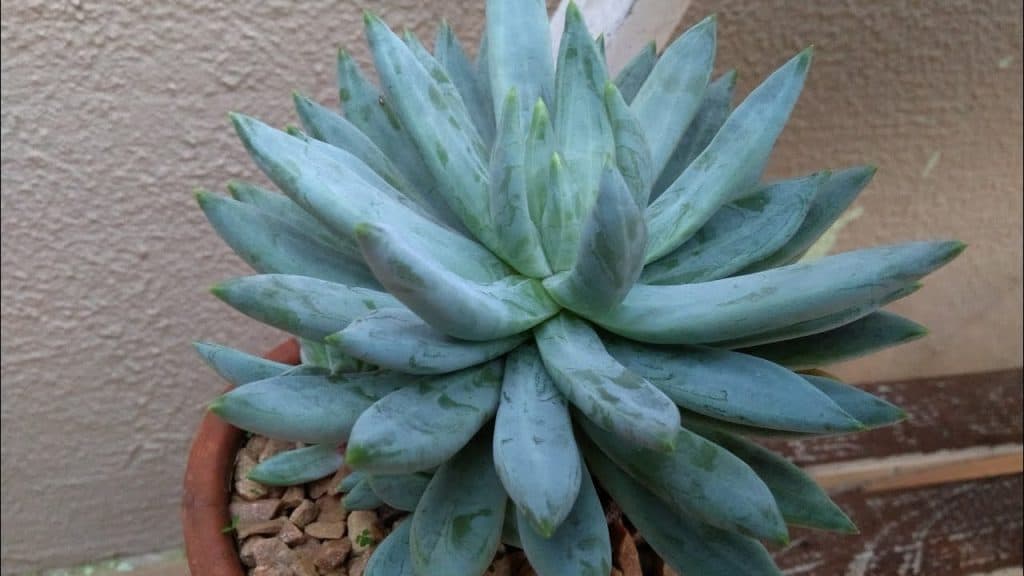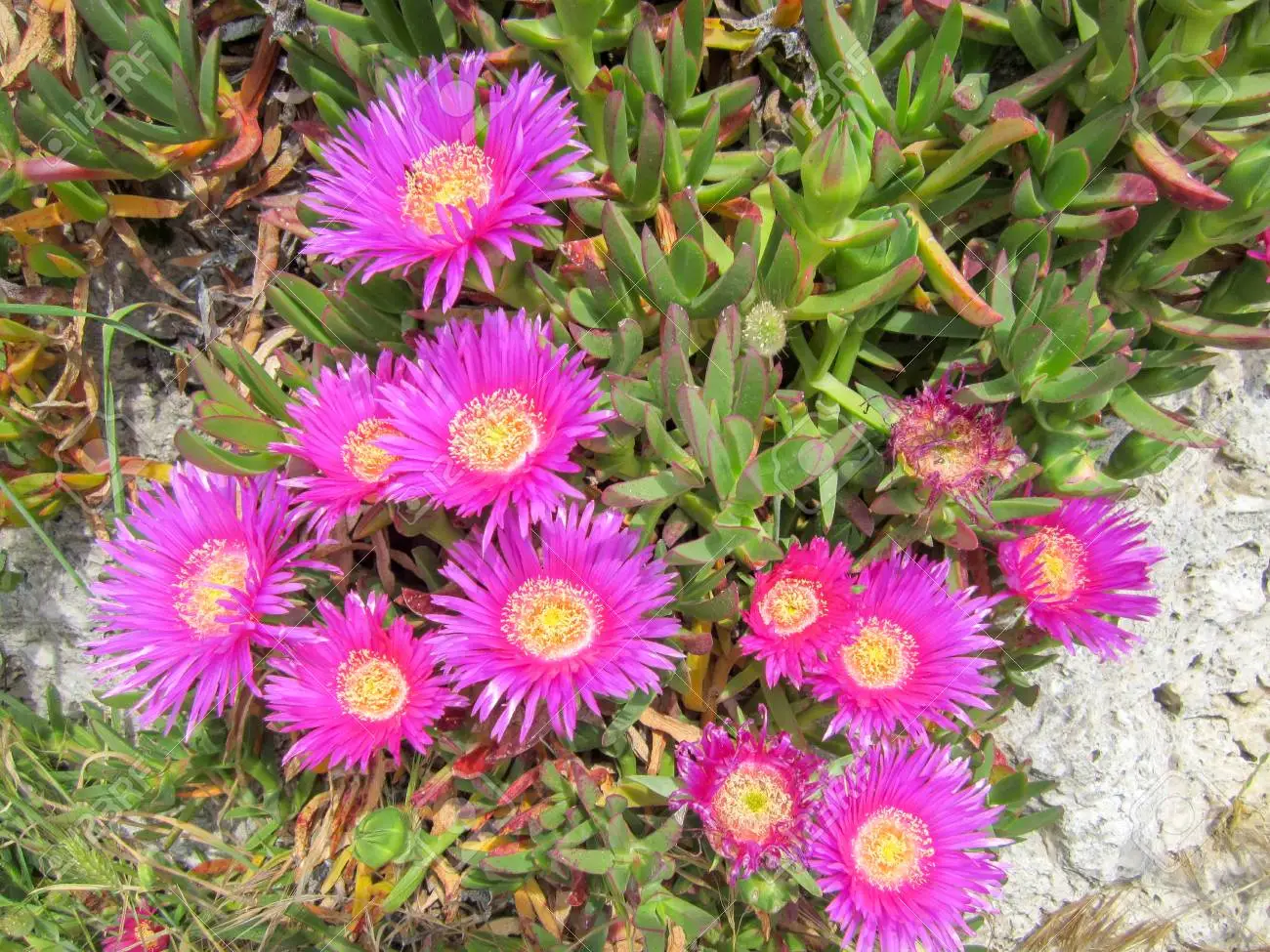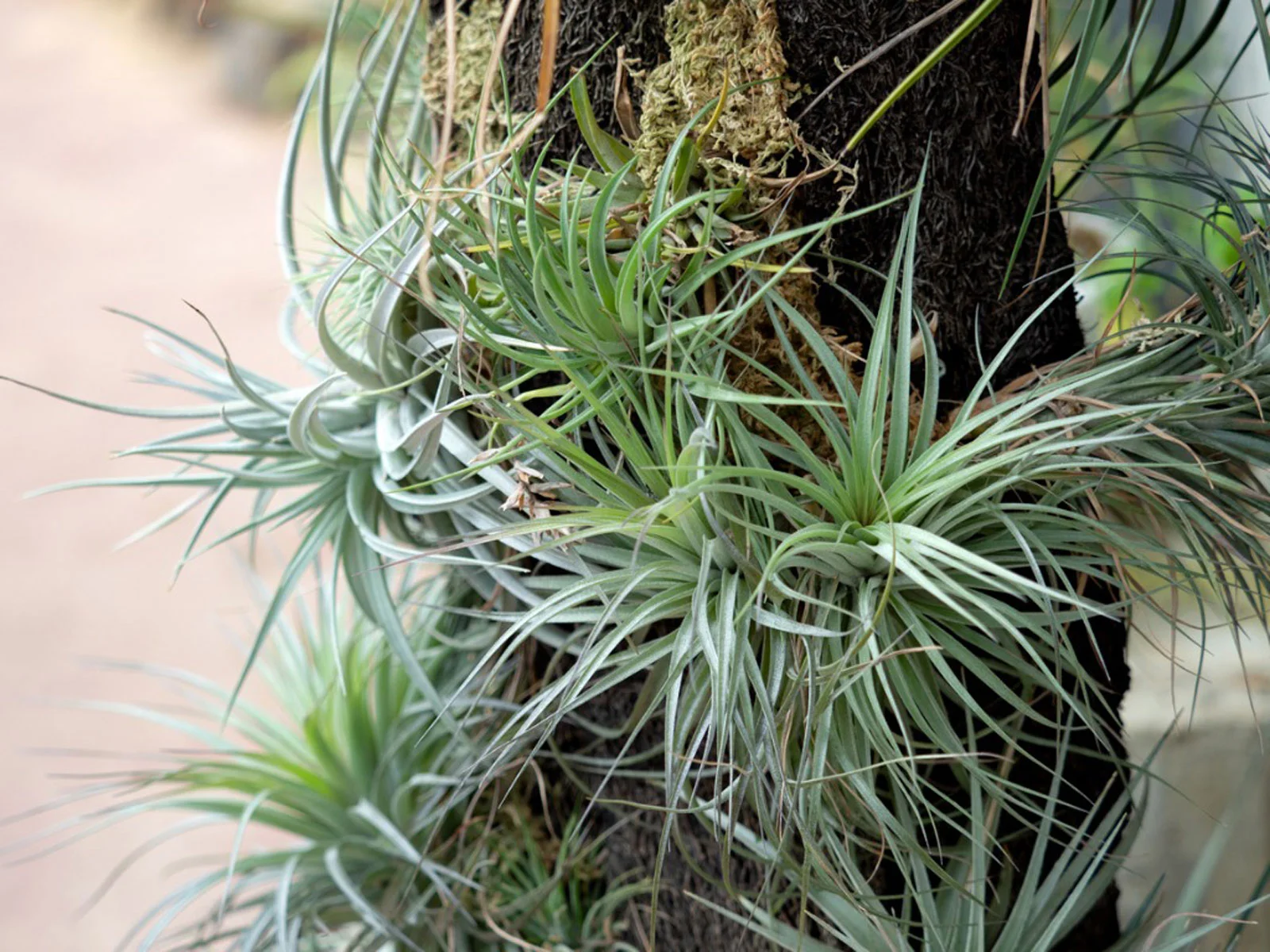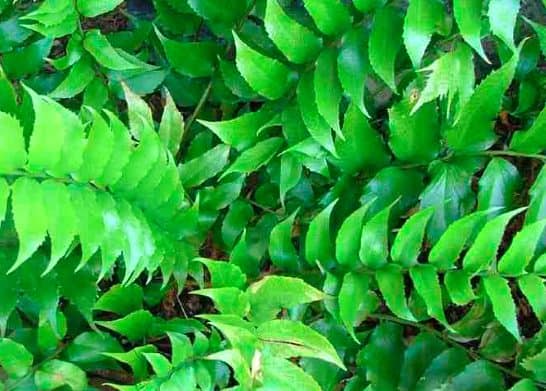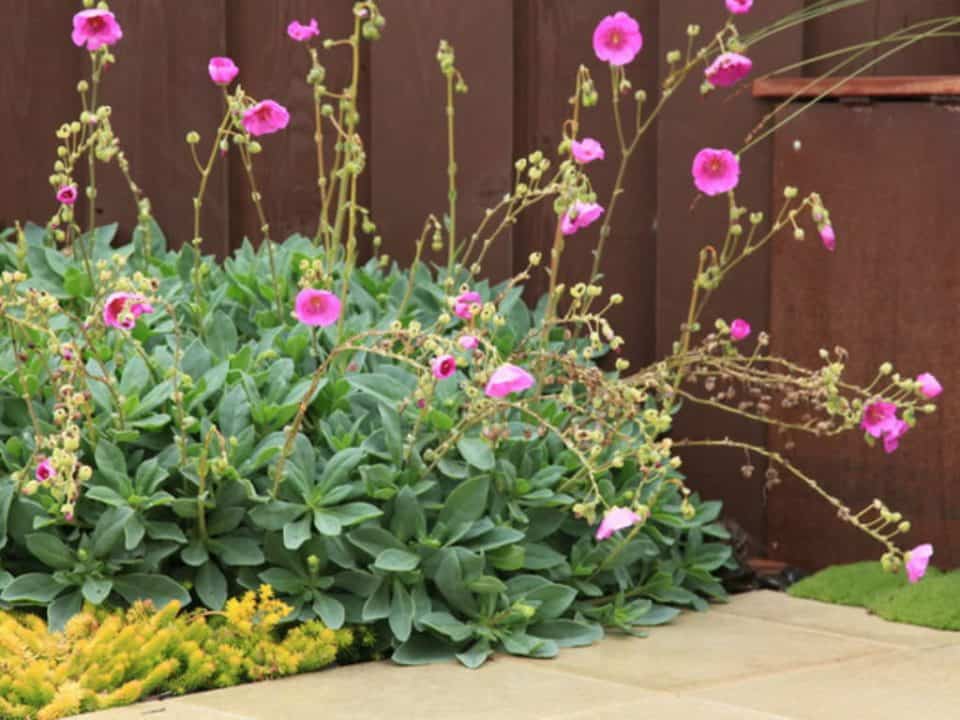Pachyveria glauca, also known as the little jewel succulent, is so small and cute you’ll want to put it in your pocket and take it everywhere! It’s perfect as an indoor plant because it doesn’t require direct sunlight and can survive on very little water.
It makes the perfect gift, it’s affordable, has low maintenance requirements, and makes anyone feel special when they receive one. It’s also great to give as an office plant or a get-well-soon gift to cheer up someone feeling under the weather.
Little jewel succulent was one of the first succulents I got after deciding to start my own collection. It’s very easy to grow but does require a bit of attention, especially in winter when it goes dormant.
Pachyveria glauca is an attractive and easy-to-grow succulent that grows happily in most conditions, making it perfect for beginners or those who don’t have much space to grow plants.
Origin and distribution
Pachyveria glauca is a small succulent that originates from Mexico. It has been distributed to other parts of the world and can now be found in North America, Europe, and Asia. The plant grows best in warm climates and does not tolerate cold weather well.
Pachyveria glauca is a popular succulent because of its easy care requirements and its attractive blue-green leaves. These plants like sunlight but will survive indoors as long as they are watered regularly.
They also need to be planted in well-drained soil or sand with little or no fertilizer added. They prefer hot conditions but will tolerate cooler temperatures provided they are not freezing. When grown outdoors, these plants should be planted in full sun near cacti or other desert plants for protection against winter freezes and winds.
Pachyveria glauca propagation
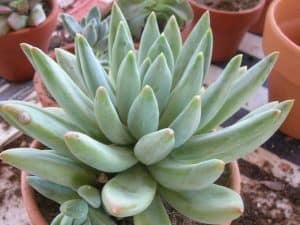
Pachyveria glauca, or little jewel succulent, is a beautiful and easy-to-care-for plant. To propagate, or create new plants from an existing one, simply remove a leaf from the mother plant and allow it to callous over for a few days.
Once the leaf has been calloused, you can then plant it in a well-draining cactus or succulent potting mix. Water lightly and wait for new growth to appear! If your leaves are not thick enough, you may need to provide more shade as these sun-loving plants don’t do well with too much direct sunlight.
It’s also important to avoid any frost or ice accumulation as this will damage the delicate leaves of this sun-loving succulent. For best results, place this plant in bright light and water when the soil feels dry to the touch.
The pachyveria glauca doesn’t require much maintenance making it perfect for beginner gardeners or those who prefer low-maintenance houseplants.
Pachyveria glauca care information
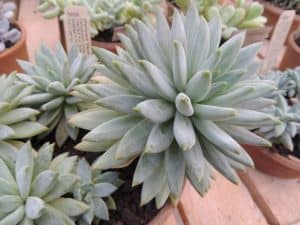
Pachyveria glauca, or little jewel succulent, is a beautiful and easy-to-care-for plant. These succulents are native to Mexico and thrive in bright, indirect light. They are drought-tolerant and only need to be watered every other week or so. Pachyveria glauca are not frost-hardy, so be sure to bring them indoors if the temperature outside starts to drop.
Light requirement
Pachyveria glauca does best in bright, indirect sunlight but can tolerate some direct sun if it is not too hot. The leaves will start to turn red in too much direct sun. If your plant is not getting enough light, the leaves will start to stretch and become leggy. Pachyveria glauca can also tolerate low light levels, but growth will be slower.
Soil/potting mix
Pachyveria glauca is a drought-tolerant succulent that can be grown in almost any well-drained soil mix. A good potting mix for this plant would be two parts sand to one part loam or peat moss and should have an adequate amount of drainage holes, as these plants don’t like soggy soil.
Another way to grow pachyveria glauca is by planting it in the cactus mix and leaving the top inch of the soil dry. If you are trying to grow your pachyveria glauca from seed, it will need a well-draining growing medium such as perlite or vermiculite with a little bit of lime added to the mixture so it doesn’t stay too acidic. Keep the seedlings out of direct sunlight until they are acclimated.
Watering
Water your Pachyveria glauca when the soil is dry to the touch. This succulent doesn’t like to be waterlogged, so make sure you allow the soil to dry out completely before watering again. Water deeply, but infrequently, and be sure to empty any drainage tray to prevent your plant from sitting in water.
If you notice the leaves starting to wrinkle, that means it’s time to water. The best way to care for a pachyveria glauca is by planting it in a container with plenty of room for it to grow.
The larger the pot, the more water you will need to provide. A shallow container is best as these plants are prone to rot if they get too wet!
Fertilizer
Pachyveria glauca is a beautiful little succulent that is perfect for adding a touch of green to your home. This plant is easy to care for and does not require much fertilizer. However, if you want to give your Pachyveria glauca a little boost, you can fertilize it once a month with diluted succulent fertilizer.
Simply mix the fertilizer with water according to the package directions and then pour it onto the soil around the plant. You should do this in springtime, summertime, and fall. Fertilizing Pachyveria glauca will help keep it healthy by providing nutrients so that it can grow healthy leaves.
Temperature
Just like other succulents, pachyveria glauca needs bright light and well-draining soil. However, this plant is a bit more sensitive to cold than others. If the temperature drops below 50 degrees Fahrenheit, the leaves will start to turn red or brown.
In extreme cases, the plant may die. If you live in an area with cold winters, it’s best to grow pachyveria glauca indoors where you can control the temperature.
Humidity
Pachyveria glauca is a succulent that does best in high humidity. If the air is too dry, the leaves will start to wrinkle and the plant will become stressed. To increase the humidity around your Pachyveria glauca, you can use a pebble tray or humidifier.
Misting the leaves with water can also help, but make sure not to do it too often or the plant will rot.
The ideal humidity range is 40-60%. Keep this number in mind when deciding on a potting mix for your little jewel. A cactus mix might be more appropriate for higher temperatures and low humidity whereas an epiphytic mix would be better for lower temperatures and higher humidity.
Pruning
Although Pachyveria glauca is a slow grower, it will eventually need pruning. Pruning not only keeps the plant looking its best but also encourages new growth. To prune, simply cut back the stems to the desired length. Be sure to use sharp, clean shears to avoid damaging the plant. Never try to remove roots or stem from the pot; this may cause serious damage.
When to repot
You’ll know it’s time to repot your Pachyveria glauca when the roots start to show through the drainage holes in the bottom of the pot, or when the plant starts to outgrow its pot. If you see either of these signs, it’s time for a bigger pot!
Follow these steps to repot your Pachyveria glauca:
-
- Choose a new pot that is only 1-2 inches larger in diameter than the current pot.
- Fill the new pot with cactus mix and set it aside so that the soil can settle before planting your succulent.
- Gently remove your succulent from its old pot by loosening the soil around the root ball and then lifting up on it with both hands while pulling it apart at opposite ends of the root ball.
- Plant your succulent into the new pot by making sure that the top of the root ball is level with the surface of the soil and gently pressing down until you hear a satisfying pop sound as all of the air bubbles escape.
- Water your newly planted succulent generously after transplanting it into its new home, but don’t water again until everything has dried out again – don’t overwater!
- Place your succulent in a bright location where it will receive plenty of indirect sunlight.
- Use a regular houseplant fertilizer every two weeks during the growing season and use nothing during the winter months.
Dormancy/Winter rest
Although Pachyveria glauca is technically a succulent, it does require a winter rest period in order to thrive. During this time, the plant will go dormant and its leaves will fall off. Don’t worry, this is normal! Just make sure to keep the plant in a cool, dry place with plenty of airflows.
Once spring arrives, you can start watering your Pachyveria glauca again and it will soon bounce back to life. You should also consider repotting or dividing the plant now, as they may be too crowded or rootbound by now. Make sure that when transplanting, your soil stays well-drained to prevent overwatering!
Pachyveria glauca flower & fragrance
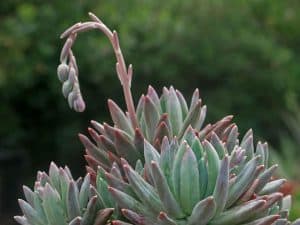
The Pachyveria glauca, or Little Jewel succulent, is a small plant with white flowers and a sweet fragrance. This plant is native to Mexico and can be found in the wild in rocky areas or on cliffs.
The Pachyveria glauca is a member of the Crassulaceae family and is closely related to the Sedum genus. The flowers of the Pachyveria glauca are small and white, with a sweet fragrance that is reminiscent of vanilla.
Growth rate
Pachyveria glauca is a relatively slow-growing succulent, so don’t expect it to fill in your garden bed overnight. However, its unique shape and color make it well worth the wait. The best way to encourage growth is to plant it in well-draining soil and give it plenty of sunlight. Watering should be done sparingly, as too much water can cause the leaves to rot.
Toxicity
Pachyveria glauca is not considered to be toxic to humans or animals. However, as with all succulents, it is important to keep this plant out of reach of small children and pets who may be tempted to nibble on its leaves. If ingested, the plant could cause stomach upset.
USDA hardiness zones
Pachyveria glauca grows best in USDA hardiness zones 10-11. They are only an inch high and a few inches wide.
Pests and diseases
Although Pachyveria glauca is a succulent, it is still susceptible to pests and diseases. The most common pests are mealybugs and aphids, which can be controlled with regular applications of insecticidal soap. The most common disease is root rot, which can be prevented by planting the succulent in well-draining soil.
The most common problem for pachyveria glauca plants are pests like aphids and spider mites. Aphids can be easily removed by spraying them with soapy water, or by using insecticidal soap. Spider mites should be sprayed directly with an insecticide made for controlling these pests and repeated in two weeks if needed.
